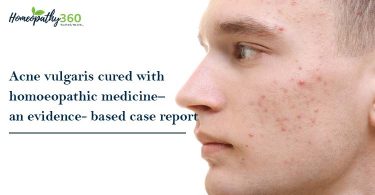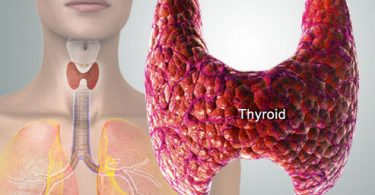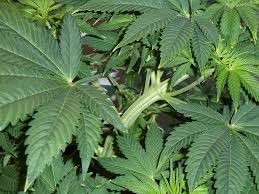
Can we use homoeopathy to treat HYPERTENSION without the use of modern medicines? Can a homoeopathic medicine in DECIMAL potency act as a replacement to modern medicine? Can we give a constitutional medicine in centesimal or 50 millesimal potency along with this decimal potency to STOP the allopathic medicine of the patient and switch them to ONLY homoeopathic medicines?
KEYWORDS
Hypertension, Adrenalinum, decimal potency, constitutional, allopathic medicine.
INTRODUCTION
Hypertension (HTN or HT), also known as high blood pressure (HBP), is a long-term medical condition in which the blood pressure in the arteries is persistently elevated.[1] High blood pressure usually does not cause symptoms.[2] Long-term high blood pressure, however, is a major risk factor for coronary artery disease, stroke, heart failure, atrial fibrillation, peripheral vascular disease, vision loss, chronic kidney disease, and dementia.[3,4,5,6]
High blood pressure is classified as either primary (essential) high blood pressure or secondary high blood pressure.[7] About 90–95% of cases are primary, defined as high blood pressure due to nonspecific lifestyle and genetic factors.[8,9] Lifestyle factors that increase the risk include excess salt in the diet, excess body weight, smoking, and alcohol use.[2,7] The remaining 5–10% of cases are categorized as secondary high blood pressure, defined as high blood pressure due to an identifiable cause, such as chronic kidney disease, narrowing of the kidney arteries, an endocrine disorder, or the use of birth control pills.[7]
Blood pressure is expressed by two measurements, the systolic and diastolic pressures, which are the maximum and minimum pressures, respectively.[3] For most adults, normal blood pressure at rest is within the range of 100–130 millimetres mercury (mmHg) systolic and 60–80 mmHg diastolic.[9,10] For most adults, high blood pressure is present if the resting blood pressure is persistently at or above 130/90 or 140/90 mmHg.[7,9]
Lifestyle changes and medications can lower blood pressure and decrease the risk of health complications.[11] Lifestyle changes include weight loss, decreased salt intake, physical exercise, and a healthy diet.[7] If lifestyle changes are not sufficient then blood pressure medications are used.[11] Up to three medications can control blood pressure in 90% of people.[7] The treatment of moderately high arterial blood pressure (defined as >160/100 mmHg) with medications is associated with an improved life expectancy.[12]
BUT,
Can we use Homoeopathy to treat HYPERTENSION without the use of Modern medicines? Can a Homoeopathic Medicine in DECIMAL potency act as a replacement to Modern medicine? Can we give a Constitutional medicine in Centesimal or LM potency along with this Decimal potency to STOP the allopathic medicine of the patient and switch them to ONLY homoeopathic medicines?
BODY
To find out the answer to this, I read about an interesting drug called “ADRENALINUM”.
Some of them are mentioned below –
Adrenaline
Adrenaline, also known as adrenalin or epinephrine, is a hormone, neurotransmitter, and medication.[13,14] Epinephrine is normally produced by both the adrenal glands and certain neurons.[13] It plays an important role in the fight-or-flight response by increasing blood flow to muscles, output of the heart, pupil dilation, and blood sugar.[15,16] It does this by binding to alpha and beta receptors.[16] It is found in many animals and some single cell organisms.[17,18] Napoleon Cybulski first isolated epinephrine in 1895.[19]
Mechanism of action
Physiologic responses to epinephrine by organ
| Organ | Effects |
| Heart | Increases heart rate; contractility; conduction across AV node |
| Lungs | Increases respiratory rate; bronchodilation |
| Systemic | Vasoconstriction and vasodilation |
| Liver | Stimulates glycogenolysis |
| Systemic | Triggers lipolysis |
| Systemic | Muscle contraction |
As a hormone, epinephrine acts on nearly all body tissues. Its actions vary by tissue type and tissue expression of adrenergic receptors. For example, high levels of epinephrine causes smooth muscle relaxation in the airways but causes contraction of the smooth muscle that lines most arterioles.
Epinephrine acts by binding to a variety of adrenergic receptors. Epinephrine is a nonselective agonist of all adrenergic receptors, including the major subtypes α1, α2, β1, β2, and β3.[20] Epinephrine’s binding to these receptors triggers a number of metabolic changes.
Its actions are to increase peripheral resistance via α1 receptor-dependent vasoconstriction and to increase cardiac output via its binding to β1 receptors. The goal of reducing peripheral circulation is to increase coronary and cerebral perfusion pressures and therefore increase oxygen exchange at the cellular level.[21] While epinephrine does increase aortic, cerebral, and carotid circulation pressure, it lowers carotid blood flow and end-tidal CO2 or ETCO2 levels. It appears that epinephrine may be improving macro-circulation at the expense of the capillary beds where actual perfusion is taking place.[22]
As a medication, it is used to treat a number of conditions including anaphylaxis, cardiac arrest, and superficial bleeding.[23] Common side effects include shakiness, anxiety, and sweating. A fast heart rate and high blood pressure may occur. Occasionally it may result in an abnormal heart rhythm. While the safety of its use during pregnancy and breastfeeding is unclear, the benefits to the mother must be taken into account.[23]
ADRENALINUM AND VARIOUS OTHER STUDIES –
- Arterio-sclerosis, Angina pectoris, chlorosis, Chronic-aortitis, Haemophilia, Hypotension, shock (myocardial infarction) have been helped with adrenalinum.[24]
- The main action of Adrenalin is stimulation of the sympathetic endings, notably the splanchnic area, causing constriction of the peripheral arterioles, with resulting rise in blood pressure.[25]
- It appears to possess a very powerful local action over dilated blood vessels. When injected into the circulation blood pressure rises, the arteries being contracted.[26]
- It causes very prompt rise of blood pressure and increases the slow pulse rate to normal one, because it stimulates the nerve ends attached to the blood vessels of the heart especially 3x and 6x.[27]
- Blood – BLOOD vessels, general, – aorta, inflamed, acute – chronic, Blood – BLOOD vessels, general, – aorta, inflamed, acute – ulcerative, Blood – BLOOD vessels, general, – arteriosclerosis, Blood – BLOOD vessels, general, – inflammation, of – chronic, Blood – HYPERTENSION, high blood pressure.[28]
- Adrenaline or Epinephrine, the active principle of the medulla of the suprarenal gland is employed as a chemical messenger in the regulation of the activities of the body in fact.
- Its presence is essential to the activity of the sympathetic nerves. Adrenaline appears to possess a very powerful local action over dilated blood vessels. When injected into the circulation blood pressure raises, the arteries being contracted.[29]
- Malignant hypertension, Atherosclerosis in young people, Angina pectoris; constriction chest with anguish, vertigo and nausea/vomiting, Pulse rapid/irregular, Haemorrhages from any part with hypertension.[30]
- Is cowardly, despondent, nervous, distracted, averse to mental labor; the eyes feel strained, as if one must open them wide or press on them, the eyeballs ache, better rubbing and pressure; the face flushed, but not red, the urine hot, strong, scalding, copious, frequent and pale; the arms and legs, especially below the knees, tire and ache, especially on walking; the pulse is rapid, irregular and intermittent.[31]
- Arteriosclerosis, Angina pectoris, Shock or heart failure during anesthesia, to raise the blood pressure.[32]
- Adrenaline or Epinephrine, the active principle of the medulla of the suprarenal gland is employed as a chemical messenger in the regulation of the activities of the body in fact.
- Its presence is essential to the activity of the sympathetic nerves. Adrenaline appears to possess a very powerful local action over dilated blood vessels. When injected into the circulation blood pressure rises, the arteries being contracted.[33]
- Its chief therapeutic use depends on its vasoconstriction action; therefore a most powerful and prompt astringent and haemostatic; and invaluable in checking capillary haemorrhages from all parts, where local or direct application is feasible, for homœopathic use 2x to 6x attenuation.[34]
- Its main action is as the mediator of the fight or flight response. It quickly increases heart rate, blood pressure, cardiac output.[35]
CONCLUSION
The question which arose in my mind was, can we give ADRENALINUM IN DECIMAL POTENCY and try to reduce the Anti-hypertensives for the same patient? Here, we could continue our Individualized Homoeopathic Medicine for the patient and wean off the Anti-hypertensive and shift the patients on Adrenalinum in decimal potency (preferably 3X and 6X).
I urge senior homoeopaths and others to consider this thought for further evaluation with their vast experience and huge daily practice.
REFERENCES
- Naish, Jeannette; Court, Denise Syndercombe (2014). Medical sciences (2 ed.). p. 562. ISBN 9780702052491. Archived from the original on 26 December 2016.
- “High Blood Pressure Fact Sheet”. CDC. 19 February 2015. Archived from the original on 6 March 2016. Retrieved 6 March 2016.
- Lackland, DT; Weber, MA (May 2015). “Global burden of cardiovascular disease and stroke: hypertension at the core”. The Canadian journal of cardiology. 31 (5): 569–71. doi:10.1016/j.cjca.2015.01.009. PMID 25795106.
- Mendis, Shanthi; Puska, Pekka; Norrving, Bo (2011). Global atlas on cardiovascular disease prevention and control (PDF) (1st ed.). Geneva: World Health Organization in collaboration with the World Heart Federation and the World Stroke Organization. p. 38. ISBN 9789241564373. Archived (PDF) from the original on 17 August 2014.
- Hernandorena, I; Duron, E; Vidal, JS; Hanon, O (July 2017). “Treatment options and considerations for hypertensive patients to prevent dementia”. Expert Opinion on Pharmacotherapy (Review). 18 (10): 989–1000. doi:10.1080/14656566.2017.1333599. PMID 28532183.
- Lau, DH; Nattel, S; Kalman, JM; Sanders, P (August 2017). “Modifiable Risk Factors and Atrial Fibrillation”. Circulation (Review). 136 (6): 583–96. doi:10.1161/CIRCULATIONAHA.116.023163. PMID 28784826.
- Poulter, NR; Prabhakaran, D; Caulfield, M (22 August 2015). “Hypertension”. Lancet. 386 (9995): 801–12. doi:10.1016/s0140-6736(14)61468-9. PMID 25832858.
- Carretero OA, Oparil S; Oparil (January 2000). “Essential hypertension. Part I: definition and etiology”. Circulation. 101 (3): 329–35. doi:10.1161/01.CIR.101.3.329. PMID 10645931. Archived from the original on 12 February 2012.
- Whelton, Paul K.; Carey, Robert M.; Aronow, Wilbert S.; Casey, Donald E.; Collins, Karen J.; Dennison Himmelfarb, Cheryl; DePalma, Sondra M.; Gidding, Samuel; Jamerson, Kenneth A.; Jones, Daniel W.; MacLaughlin, Eric J.; Muntner, Paul; Ovbiagele, Bruce; Smith, Sidney C.; Spencer, Crystal C.; Stafford, Randall S.; Taler, Sandra J.; Thomas, Randal J.; Williams, Kim A.; Williamson, Jeff D.; Wright, Jackson T. (13 November 2017). “2017 ACC/AHA/AAPA/ABC/ACPM/AGS/APhA/ASH/ASPC/NMA/PCNA Guideline for the Prevention, Detection, Evaluation, and Management of High Blood Pressure in Adults”. Hypertension: HYP.0000000000000065. doi:10.1161/HYP.0000000000000065.
- Giuseppe, Mancia; Fagard, R; Narkiewicz, K; Redon, J; Zanchetti, A; Bohm, M; Christiaens, T; Cifkova, R; De Backer, G; Dominiczak, A; Galderisi, M; Grobbee, DE; Jaarsma, T; Kirchhof, P; Kjeldsen, SE; Laurent, S; Manolis, AJ; Nilsson, PM; Ruilope, LM; Schmieder, RE; Sirnes, PA; Sleight, P; Viigimaa, M; Waeber, B; Zannad, F; Redon, J; Dominiczak, A; Narkiewicz, K; Nilsson, PM; et al. (July 2013). “2013 ESH/ESC Guidelines for the management of arterial hypertension: The Task Force for the management of arterial hypertension of the European Society of Hypertension (ESH) and of the European Society of Cardiology (ESC)”. European Heart Journal. 34 (28): 2159–219. doi:10.1093/eurheartj/eht151. PMID 23771844.
- How Is High Blood Pressure Treated?” National Heart, Lung, and Blood Institute. 10 September 2015. Archived from the original on 6 April 2016. Retrieved 6 March 2016.
- Musini, VM; Tejani, AM; Bassett, K; Wright, JM (7 October 2009). “Pharmacotherapy for hypertension in the elderly”. The Cochrane Database of Systematic Reviews (4): CD000028. doi:10.1002/14651858.CD000028.pub2. PMID 19821263.
- Lieberman M, Marks A, Peet A (2013). Marks’ Basic Medical Biochemistry: A Clinical Approach (4th ed.). Philadelphia: Wolters Kluwer Health/Lippincott Williams & Wilkins. p. 175. ISBN 9781608315727.
- “(-)-adrenaline”. Guide to Pharmacology. IUPS/BPS. Retrieved 21 August 2015.
- Bell DR (2009). Medical physiology: principles for clinical medicine (3rd ed.). Philadelphia: Lippincott Williams & Wilkins. p. 312. ISBN 9780781768528.
- Khurana (2008). Essentials of Medical Physiology. Elsevier India. p. 460. ISBN 9788131215661.
- Buckley E (2013). Venomous Animals and Their Venoms: Venomous Vertebrates. Elsevier. p. 478. ISBN 9781483262888.
- Animal Physiology: Adaptation and Environment (5th ed.). Cambridge University Press. 1997. p. 510. ISBN 9781107268500.
- Szablewski, Leszek (2011). Glucose Homeostasis and Insulin Resistance. Bentham Science Publishers. p. 68. ISBN 9781608051892.
- Shen, Howard (2008). Illustrated Pharmacology Memory Cards: PharMnemonics. Minireview. p. 4. ISBN 1-59541-101-1.
- “Guideline 11.5: Medications in Adult Cardiac Arrest” (PDF). Australian Resuscitation Council. December 2010. Retrieved 7 March 2015.
- Burnett AM, Segal N, Salzman JG, McKnite MS, Frascone RJ (August 2012). “Potential negative effects of epinephrine on carotid blood flow and ETCO2 during active compression-decompression CPR utilizing an impedance threshold device”. Resuscitation. 83 (8): 1021–4. doi:10.1016/j.resuscitation.2012.03.018. PMID 22445865.
- “Epinephrine”. The American Society of Health-System Pharmacists. Retrieved Aug 15, 2015.
- (Materia medica made easy, S. K. Banerjea)
- (Pocket manual of homoeopathic materia medica, W. Boericke, Pocket manual of homoeopathic materia medica, , 9th edition, Motilal Banarasidas Publishers Pvt Ltd, pg 13-15)
- (J. H. Clarke, Dictionary of practical materia medica, 3rd edition, Vol 1, The Homoeopathic Publishing Company Ltd, London, pg 31.)
- (Directory of diseases and cures in Homoeopathy, R. L Gupta)
- (R. Murphy, Homoeopathic medical repertory, 2nd edition 1996, Hahnemann Academy of North America, ISBN – 0-9635764-0-2, Chapter – Blood, pg 188-197.)
- (Homoeopathic Remedy Guide, R. Murphy, 2nd edition, Hahnemann Academy of North America, ISBN – 0-9635764-0-2, pg 32)
- (Keynotes, Samuel, from RadarOpus 2.1)
- (Pulford, Homoeoapthic Materia medica of graphic drug pictures, Reprint edition 1996, B Jain Publishers Pvt Ltd, ISBN – 81-7021-117-4, pg 12)
- (C.K. Shreedharan, A concise materia medica and repertory of Nosodes)
- (Varma P. N and Indu V., Encyclopedia of homoeopathic pharmacopoeia)
- (F. Vermeulen, Concordant Reference, Complete classic materia medica, 1st edition 2011, B Jain Archibel S.P.R.L, ISBN – 978-2-87491-020-3, pg 28-29)
- (F. Vermeulen, The ultimate Prisma, Synoptic Reference 2, 1st edition, , Saltire Books Ltd, ISBN – 978-1-908127-13-6, pg 32-36)
About Author:
Dr. Darshan Jayesh Shah is a Consulting Homoeopath and is fascinated with and has a special interest in the in-depth study of Hahnemann’s Organon of Medicine and Aphorisms and its application in practice.





